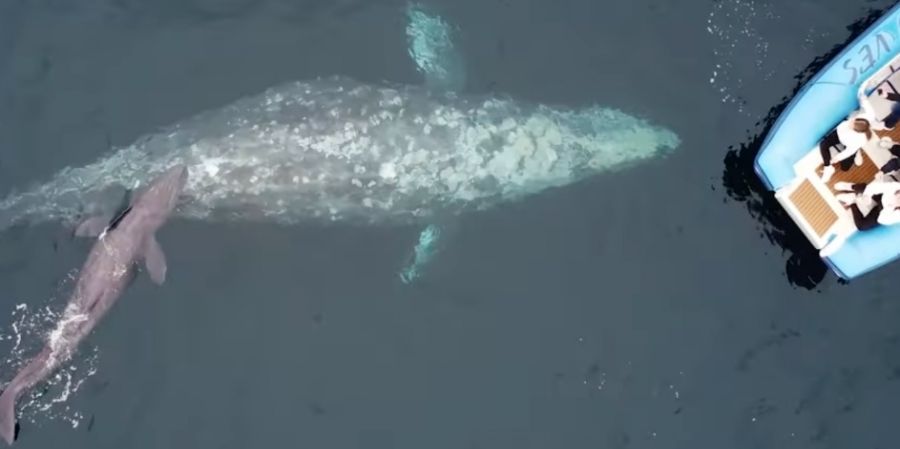

A fortunate gathering of whale watchers as of late watched a dark whale calf being birthed off the shoreline of California. It very well may be whenever that this unbelievable peculiarity first has at any point been gotten on camera.
A fortunate whale-watching bunch in Southern California as of late got first line seats to one of the most uncommon and most supernatural displays in nature: the introduction of a dim whale calf. A video of the "once in a blue moon locating" could be the very first film of the species' introduction to the world recorded, specialists propose.
Travelers on board a multivessel visit coordinated by Capt. Dave's Dolphin and Whale Watching Safari(opens in new tab) (DWWS) saw the very uncommon peculiarity on Jan. 2 a couple of miles off the shoreline of Dana Point in Orange Province, DWWS delegates composed on Facebook(opens in new tab). The visit bunch at first detected a solitary female somewhere close to 40 and 50 feet (12 to 15 meters) long. Presently a while later, the female started acting inconsistently, before a little pool of blood arose at the surface. The concerned spectators stressed that this was proof of a shark assault, until a little calf rose to the surface to take its most memorable breath.
A video(opens in new tab) of the mother and calf pair, which was transferred to the DWWS YouTube channel, shows the mother swimming close by her new posterity and sporadically pushing the calf toward the surface or permitting it to lay all over. The calf, which was around 15 feet (4.5 m) long, was a lot hazier than the mother and seems to have a curiously adaptable tail that made swimming troublesome.
"It's so floppy," one spectator shouted during the video.
The pleased mother was glad to flaunt her weak new calf to the packed boats. At a certain point, the pair even swam under one of the onlooking vessels, which was raised somewhat out of the water by the mother, DWWS delegates composed on YouTube.
The calf looked "floppy" since dark whales (Eschrichtius robustus) are brought into the world with delicate accidents, or tails, that require around 24 hours to become unbending, Alisa Schulman-Janiger(opens in new tab), a sea life scientist with the California Executioner Whale Undertaking, told NPR(opens in new tab). "The mother is holding the calf up, supporting it so the calf can rest and [is] really assisting it with having the option to slowly inhale," added Schulman-Janiger, who likewise runs the Los Angeles part of the American Cetacean Culture's Dark Whale Enumeration and Conduct Task.
Schulman-Janiger accepts the pair swam near one another to assist with laying out areas of strength for a that will be urgent to the calf's endurance. Ordinarily, land vertebrates concrete the mother-infant security to some extent by smelling one another, yet whales don't have an incredible feeling of smell, she told NPR. Notwithstanding, cetaceans do have "extremely delicate" skin that permits them to feel and get to know one another. "That is the reason there's a great deal of material contact and contacting going on," Schulman-Janiger said.
Dark whales ordinarily really like to conceive an offspring in the tidal ponds off Baja California, Mexico, which are hotter than the vast sea and give cover from hunters, for example, executioner whales. The female was possible moving south toward Baja California from its colder taking care of grounds in the Bering or Chukchi oceans close to The Frozen North — an excursion of around 5,000 miles (8,000 kilometers), DWWS delegates composed on YouTube. Since the calf was conceived up to this point north, it might have lower chances of endurance, however now and again the calves "in all likelihood won't stand by" any longer in the event that they are completely evolved, they added.
Individuals never have the opportunity to observe dark whale births. The new film could be the main video proof of this tricky second in presence.
"Supposedly, nobody has shot a dim whale conceiving an offspring," DWWS proprietor Dave Anderson told Live Science in an email. Schulman-Janiger concurs that catching the occasion on film was exceptionally fortunate.


